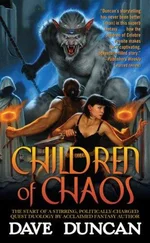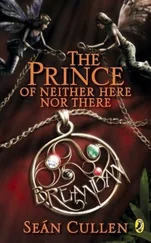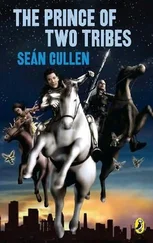Kaufman said his back was to the wall. Angry parents had objected to any pool at all. “Parents and faculty, they have really hit the wall with you folks. They’re saying, ‘We’re done! Enough is enough.’”
Later that week, a compromise was reached. The pool was expanded slightly, and a “bullpen” was added within the shield, where interested students could approach cordoned-off reporters. The press agreed to all previous demands and two new ones: no kid would be approached on the way to school that morning, and no photographs of any of the injured survivors would be used. The kids finally felt a sense of victory.
____
Mr. D was excited about the rally. But he was also worried about the new kids. It was a principal’s thing—the incoming freshmen always commanded his thoughts this time of year. Kids would either assimilate quickly or spend four years struggling to fit in. The first two weeks were crucial.
Mr. D chose to combat the chasm by highlighting it. He met with the academic and sports teams and the student senate over the summer, and he gave every kid and every teacher the same mission: These kids will never understand you. They will never endure your pain, never bridge the gap between social classes that you did. So help them.
By and large, they went for it. Kids thought they were overwhelmed by their own struggle, but what they really needed was someone else to look out for. They had to salve a different sort of pain to comprehend how to heal their own.
Mr. D’s team brainstormed up a slew of activities to grease the transition. The wall tile project seemed like an easy one. For three years, kids had been painting four-inch ceramic tiles in art class. Five hundred had been plastered above the lockers to brighten the Columbine corridors. Fifteen hundred new tiles would be added before school resumed, representing the single most noticeable change to the interior. For one morning, kids could express their grief or hope or desires visually and abstractly, without the intervention of words that wouldn’t come.
____
Brian Fuselier didn’t want his parents standing in the human shield. “The more you do that, the more you make it unnatural,” he told his dad. Brian was doing OK with the trauma; he just wanted his life back, and his school back, the way it had been.
“That’s just not going to happen,” his father said.
Agent Fuselier took Monday morning off from the investigation to join the chain. Mimi stood beside him. By seven A.M. kids were streaming in with their parents. By 7:30, the shield was five hundred strong. It would grow much larger. The parents applauded each student’s arrival.
Most of the kids wore matching white T-shirts emblazoned with their rallying cry: WE ARE on the front and COLUMBINE on the back. Small contingents had opted for their own messages: YES, I BELIEVE IN GOD OR VICTORS NOT VICTIMS.
Frank DeAngelis took the microphone and a group of kids screamed, “We love you, Mr. D!”
He teared up at the welcome, then delivered a touching speech. “You may be feeling a little anxious,” he said. “But you need to know that you are not in this alone.”
The school’s American flags were raised from half-mast for the first time since April 20, symbolically ending the period of mourning. A ribbon across the entrance was cut, and Patrick Ireland led the student body in.
44. Bombs Are Hard

Eric was counting on a slow recovery. He was less concerned about killing hundreds of people on April 20 than about tormenting millions for years. His audience was the target. He wanted everyone to agonize: the student body, residents of Jeffco, the American public, the human race.
Eric amused himself with the idea of coming back as a ghost to haunt survivors. He would make noises to trigger flashbacks, and drive them all insane. Anticipation satiated Eric for months. Then it was time to act.
Senior year, just before Halloween, he began assembling his arsenal. Eric sat down in his room with a stack of fireworks, split each one down the side, and tapped the shiny black powder into a coffee can. Once he had a sufficient volume, he tipped the can and guided a fine little trickle into a carbon dioxide cartridge. He measured it out carefully, almost to the rim. Then he applied a wick, sealed it off, and set it aside. One cricket, ready for detonation. He was pleased with his work. He assembled nine more.
The pipe bombs required a lot more gunpowder, as well as a PVC pipe to house each one. Eric assembled four of those that day. The first three he designated the Alpha batch. Not bad, but he could do better. He set them aside and tried a different approach. He built just one bomb for the Beta batch. Better. Still room for improvement. That was enough for one day.
Eric drew up a chart to record his production data. He set up columns to log each batch by name, size, quantity, shrapnel content, and power load. Then he rated his work. Six of his eight batches would earn an “excellent” assessment. His worst performance was “O.K.”
The next day, Eric got right back to it, producing six more pipe bombs—the rest of the Beta batch. Later, he would create Charlie, Delta, Echo, and Foxtrot, using military lingo for all of the batches, except that soldiers use Bravo, not Beta .
Eric penned nearly a dozen new journal entries in the next two months. “I have a goal to destroy as much as possible,” he wrote, “so I must not be sidetracked by my feelings of sympathy, mercy, or any of that.”
It was a mark of Eric’s ruthlessness that he comprehended the pain and consciously fought the urge to spare it. “I will force myself to believe that everyone is just another monster from Doom,” he wrote. “I have to turn off my feelings.”
Keep one thing in mind, he said: he wanted to burn the world. That would be hard. He had begun producing the explosives, and it was a lot of work. Ten pipe bombs and ten puny crickets after two days’ effort. Those would not destroy much. “God I want to torch and level everything in this whole fucking area,” he said, “but bombs of that size are hard to make.”
Eric took a few moments to enjoy the dream. He envisioned half of Denver on fire: napalm streams eating the skin off skyscrapers, explosive gas tanks ripping through residential garages. Napalm recipes were available online. The ingredients were readily attainable. But he had to be realistic. “It will be very tricky getting all of our supplies, explosives, weaponry, ammo, and then hiding it all and then actually planting it all,” he said. A lot could go wrong in the next six months, and if they did get busted, “we start killing then and there. I aint going out without a fight.”
Eric repeated that last line almost verbatim in an English essay. The assignment was to react to a quote from literature, and Eric had chosen this line from Euripides’ tragedy Medea: “No, like some yellow-eyed beast that has killed its hunters let me lie down on the hounds’ bodies and the broken spears.” Medea was declaring that she would die fighting, Eric wrote. They would never take her without a struggle. He repeated that sentiment seven times in a page and a quarter. He described Medea as brave and courageous, tough and strong and hard as stone. It is one of the most impassioned public essays Eric left behind.
For years after his death, Eric would be seen as a bundle of contradictions. But the threads come together in “I aint going out without a fight.” Eric dreamed big but settled for reality. Unfortunately, that passage remained hidden from the public for years. Scattered quotes from his writings would leak out, and viewed as fragments, they could seem contradictory. Was Eric planning a gun battle or a plane crash or a terrorist attack bigger than Oklahoma City’s? If he was so intent on mass murder, why did he kill only thirteen? Trying to understand Eric from the information available was like reading every fifth page of a novel and concluding that none of it made sense.
Читать дальше








